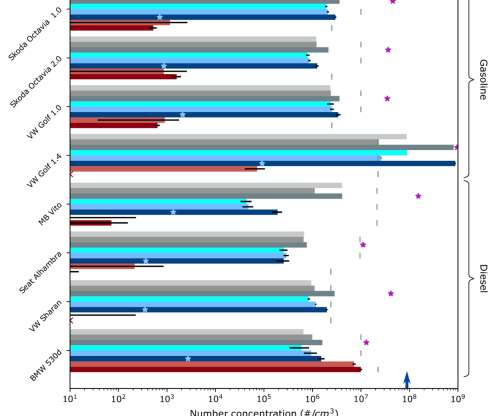Study finds engines emit exhaust nanoparticles even when not fueled during engine braking
Green Car Congress
JANUARY 19, 2014
Exhaust particle size distributions measured by ELPI (color map) and particle concentration measured by CPC (white line) during individual engine braking conditions (speed change from 32 km/h to 0 km/h). The starting point of engine braking is marked by a vertical green line, and the end point is marked by a vertical red line.






















Let's personalize your content